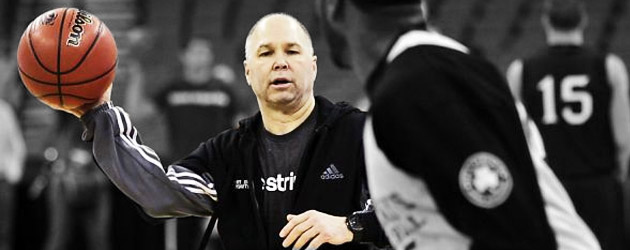By: Sam Meyerkopf / @HoopLikeDrazen
Over the years college basketball has continued to bring in more and more international players. With recruiting now a global game, I caught up with St. Mary’s Coach Randy Bennett who has had numerous international guys play for his Gaels.
Most notably he’s looked to Australia for help: Patty Mills, Daniel Kickert and rising senior and All-American hopeful Matthew Dellavedova, just to name a few. Coach Bennett has some very interesting takes on recruiting international players, how the game is growing—with special attention paid to Australia—and the story behind his remarkable record recruiting outside the United States.
Sam Meyerkopf: When you start looking at recruiting, how much time do you spend focusing on inside the US vs outside the US? Then do you actually take trips to visit players?
 Randy Bennett: We don’t take many trips. You know a lot of international kids are already over here for different prep schools and things like that. That’s where we get some of them. There’s not too much where we go out of the country. You know evaluate or actually go. We probably make one trip a year, maybe two, and it’s usually Australia for us. Other schools do Europe. Obviously our success has been in Australia, so we make sure we know what’s going on there. We kinda recruit it like people do the states. It’s all in the same conversation, this is a 2-guard, here’s one in California, one in Australia, one in Arizona. As far as conversations about them, phone calls, it’s all the same. How often do we go out of the country, maybe twice a year.
Randy Bennett: We don’t take many trips. You know a lot of international kids are already over here for different prep schools and things like that. That’s where we get some of them. There’s not too much where we go out of the country. You know evaluate or actually go. We probably make one trip a year, maybe two, and it’s usually Australia for us. Other schools do Europe. Obviously our success has been in Australia, so we make sure we know what’s going on there. We kinda recruit it like people do the states. It’s all in the same conversation, this is a 2-guard, here’s one in California, one in Australia, one in Arizona. As far as conversations about them, phone calls, it’s all the same. How often do we go out of the country, maybe twice a year.
SM: You have a lot of guys from Australia and a few from other countries. A lot of schools don’t have any international guys come in, and some have a few. Is this a philosophy you’ve developed over your years of coaching, that there’s a market out there in these other countries? That there are guys out there who can come play college basketball or is it something that happened as a need, a necessity. Where you felt that you weren’t getting the good enough players in the US and you needed to go outside the box?
RB: Great question and you summarized it well. We did go out of the box. We kinda stumbled upon on Australia. When I was at Saint Louis we had a kid from there. I had seen some of the kids from Australia. There are not a bunch of them that have come over. Luc Longley, a guy at Metro State. There were patches of them here and there.
We kinda stumbled upon it. Took a kid Adam Caporn and who’s now on my staff. I was impressed with how squared away, how well prepared he was, he started for two years. He was just sitting out there looking for a school to come to. I think he would of gone to Metro if he didn’t come to us. From there we started studying him. And from there I figured out that the players in Europe are good but are they pros, can they come over, how do you get them interested in coming to college? And I said this a while ago; you can have a really good program if you just recruited all international.
Now, if you’re at the top of the food chain in the United States you don’t have to do International. You can do all US because US has great players too. But by the time you get out of that, I don’t know what the number is, but once you get past those schools that are really special, you can just get as a good of a player outside of this country. I’m not sure whether that number is 50 or 100 but it’s not that many (talking about schools). Instead of settling, where you can’t just say well this is the next best 2-guard in California, we couldn’t get the top eight guys so let me take number nine. By that time if you want to compete at the top of our conference, you can’t take that guy. And when I came to St. Mary’s, cause I’d been in this league, I knew what the teams we’re playing with at the top of the league. I’d been at Pepperdine and was recruiting there. At the time at Pepperdine we were pretty high up on the food chain for California recruiting so we were getting transfers like Dwane Gardner and Connor Prince, you could get big players.
So I knew what they were playing with.
 Posts
Posts
